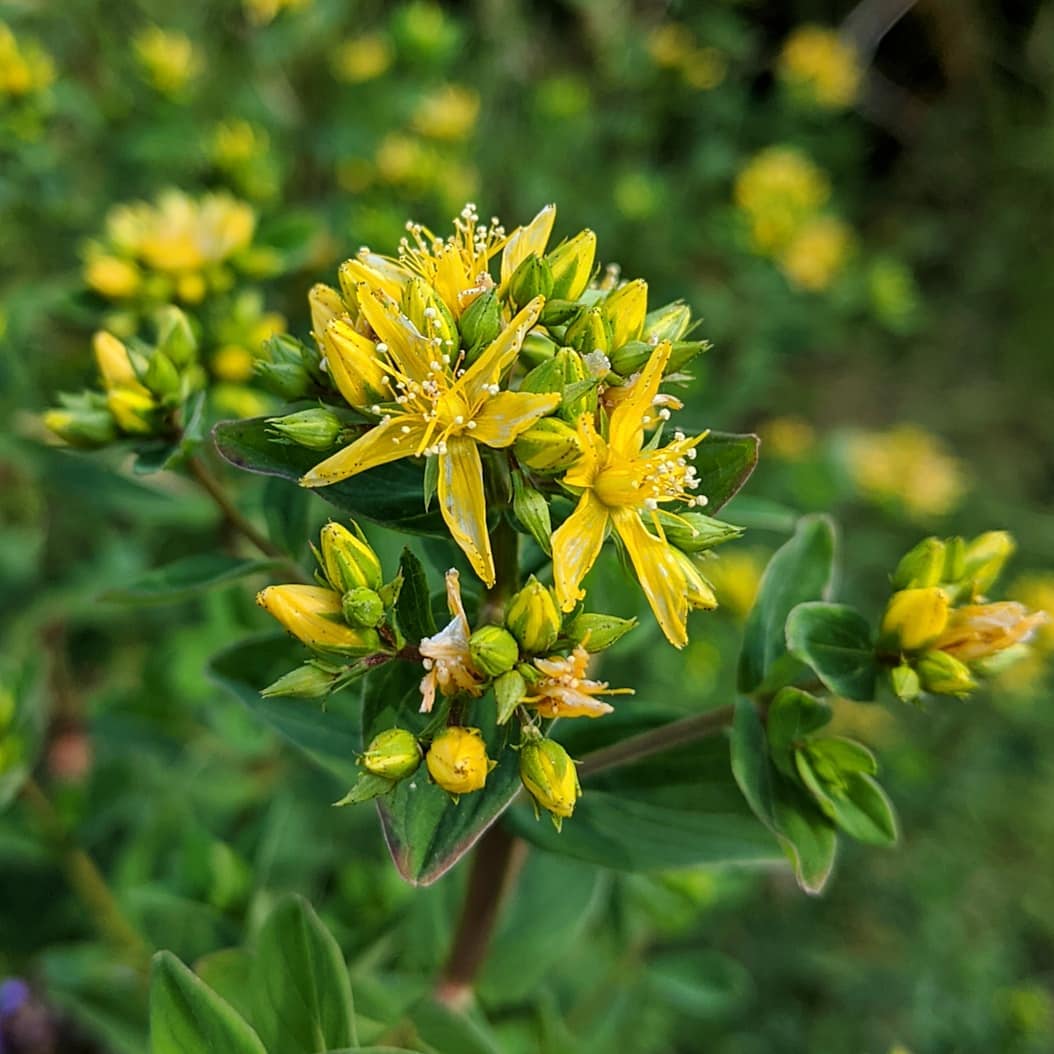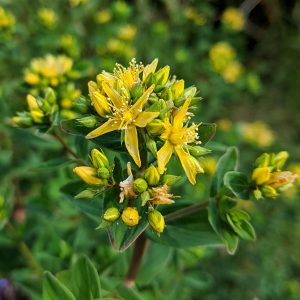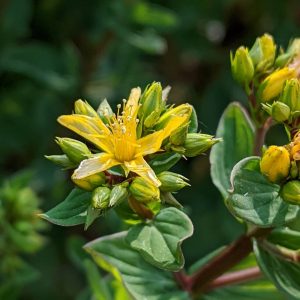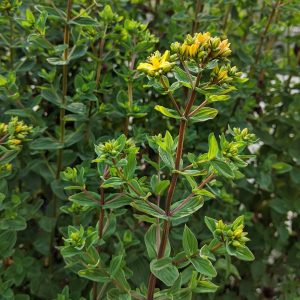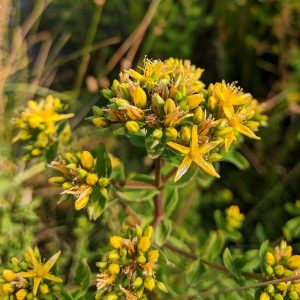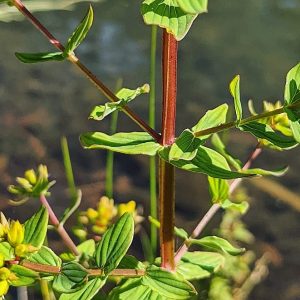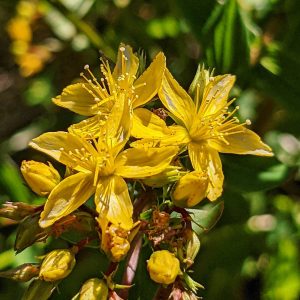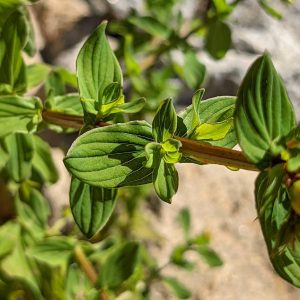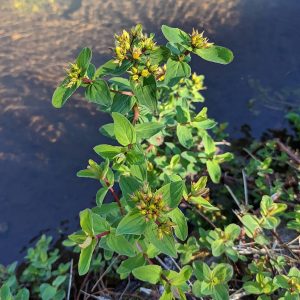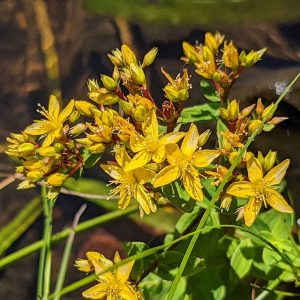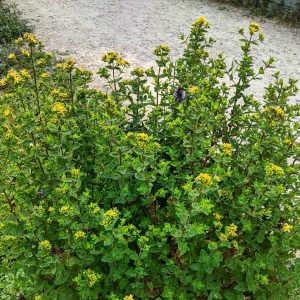Square-stalked St. John’s Wort (Hypericum tetrapterum), a moisture-loving wort (i.e. medicinal root) from Europe.
This plant has also been known as St. Peter’s Wort, although this name was confusingly also attached by Loudon and others to North American snowberry and gooseberry shrubs (Symphoricarpos spp.). Advertisements selling ‘St. Peter’s Wort’ off the boat at Launceston in 1839 are likely referring to the shrubs, which also show up in early accounts of plants grown in Hobart’s Royal Society Gardens and the Brisbane Botanic Gardens. Meanwhile, this Hypericum St. Peter’s Wort did somehow make it to Australia, whether as an herbal remedy, an aquatic ornamental selection, or as a contaminant in other aquatic plant imports.
In Victoria, a collection of the species was made at the Royal Botanic Gardens here in Melbourne in 1917, although it is not clear if this was cultivated material or the initial appearance of a longstanding population on the Gardens’ northern lagoons. Although importation of the plant into Australia was prohibited in 1967 under the Commonwealth’s Quarantine Proclamation No. 60P, St. Peter’s Wort had formed colonies in the Dandenongs and Yarra Ranges by 1976, and is now well-established in Melbourne’s eastern metropolitan and effectively nowhere else save the Huon Valley in Tasmania and a dozen records from New Zealand. It colonises the riparian banks of dependably wet ditches, lakes and streams.
The plants photographed here are a population established on the banks and mudbars of Emerald Lake, a constructed recreational lake installed in the 1940s.
View Original Post on Instagram
Search for information about Hypericum tetrapterum in the Flora of Victoria
View information and occurrences of Hypericum tetrapterum on the Atlas of Living Australia
